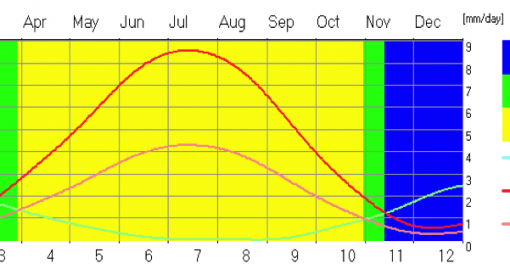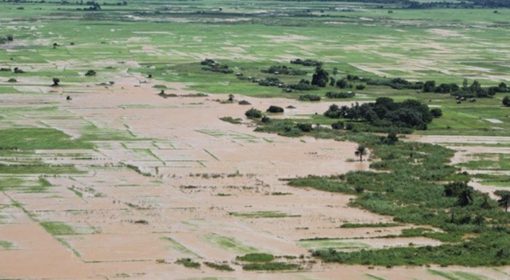posted by Frank van Steenbergen
March 04, 2013

While we ponder on long term climate change, and on what the middle of this century will look like if the earth has further heated up and some climatic cycles are upset, there is another thing to think about: freak, unexplained climate changes not linked to any clear trend but important nonetheless.
 A main example of an unexplained change is the rise of the Caspian sea. The Caspian Sea – bordered by Azerbaijan, Iran, Kazakhstan, Russia and Turkmenistan – has been rising gradually for twenty five years and no one really knows why. It is not a small matter either: the Caspian Sea is the world largest inland water body and on its banks there are cities, oil installations, tourist areas and farm land, all under threat – at high costs – to disappear under water.
A main example of an unexplained change is the rise of the Caspian sea. The Caspian Sea – bordered by Azerbaijan, Iran, Kazakhstan, Russia and Turkmenistan – has been rising gradually for twenty five years and no one really knows why. It is not a small matter either: the Caspian Sea is the world largest inland water body and on its banks there are cities, oil installations, tourist areas and farm land, all under threat – at high costs – to disappear under water.
So far, the reason is anybody’s guess. Climate change is one for sure – but what causes it is enigmatic. Caspian sea levels, moreover, have been rising and falling since long before. From 1933 to 1978 sea level dipped by 3 meter. Then 1978 onwards, the water level has increased with close to 2.5 meter.
While we are used to images of drying lakes, there are other examples of lakes that increase without the reasons fully understood. The saline Lake Bessaka in the Awash Basin in Ethiopia is an example. It may be rising due to underground seepage from nearby irrigation farms but no one fully understands how. In the mean time, the ever-rising lake threatens road and railway connections.
There are more such freak hydrological changes. The reduction of rainfall over part of the Congo Basin is an important one. From 1960 to 1990, rainfall was considerably higher than in the preceding decades. Then after 1990, for no clear reason, things changed back to the pre-1960 levels. The impact on the flood plains in the Western part of South Sudan has been huge. Rivers had decrease in discharge and started to get smaller. Whereas earlier hippos used to move up and down the river (keeping the river deep with their huge bodies) this could no longer happen when rivers became shallow and various stretches in the very flat plains were no longer connected. Some parts of the flood plains themselves changed as well, as there was less water. Earlier, they used to be inundated for a long time, leaving behind rich pastures when water levels fell. This was no longer the case. Instead the higher parts of the flood plain were gradually invaded by species such as Acacia. Areas that were vibrant flood plain changed to savannah.
Gradually, we have become used to the notion that everything has a reason and can be explained and predicted. Yet there are erratic things that defy explanation but cannot be denied. How we fit such ‘black swans’ in the larger debate on climate change is also a key question.
{jcomments on}


